I have nearly completed the 1/32nd scale Luftwaffe Oil Cart and Drum Cart. In the end I used a variety of paint techniques to complete these; the first being chipping fluid to remove some of the base color to reveal the rust colored primer below, followed by several washes, and rust colored pigments.
My research onto what the base color should be for the oil cart indicated that during the BoB period, Germany was still painting most of their equipment Panzer Grey. However, for the drum cart I took the liberty of using my imagination that it could be painted with whatever was available since it reminded me more of those home built trailer designs. So I used a dark green color similar to that used on the JU88 knowing the air base would have those colors on hand. Both base coats were airbrushed using Tamiya paints at 1:1 X20A thinner. After the initial coat, I lightened each with a few drops of white to create some highlights along the tops and sides of the vehicles. In my mind I thought the Luftwaffe may assign numbers to their ground crew equipment so I found a decal for the “15” from my spares and added to each side.
Each was airbrushed after I had airbrushed the chipping fluid and let to sit an hour or two before I used a combination of a toothpick and stiff brush to rub the base coats off revealing the rust colored red primer beneath. I then sealed this in using Model Master Glosscoat from a spray can. The following day (or two) I did an overall wash using my left over Mig Wash for Dark Green vehicles (previously used on the JU88) and then added some more detailed pin washes of various rust colored Windsor Newton Oils. I concentrated this around the nuts and bolts and areas where the paint was previously chipped. I then used dark brown colored oil paints and dragged the thinned oil down along the side of the vehicles to represent older oil spills on the vehicles; especially prevalent on the oil cart. At this point I decided to seal in the washes with a coat of Testors Dullcoat from a spray can.
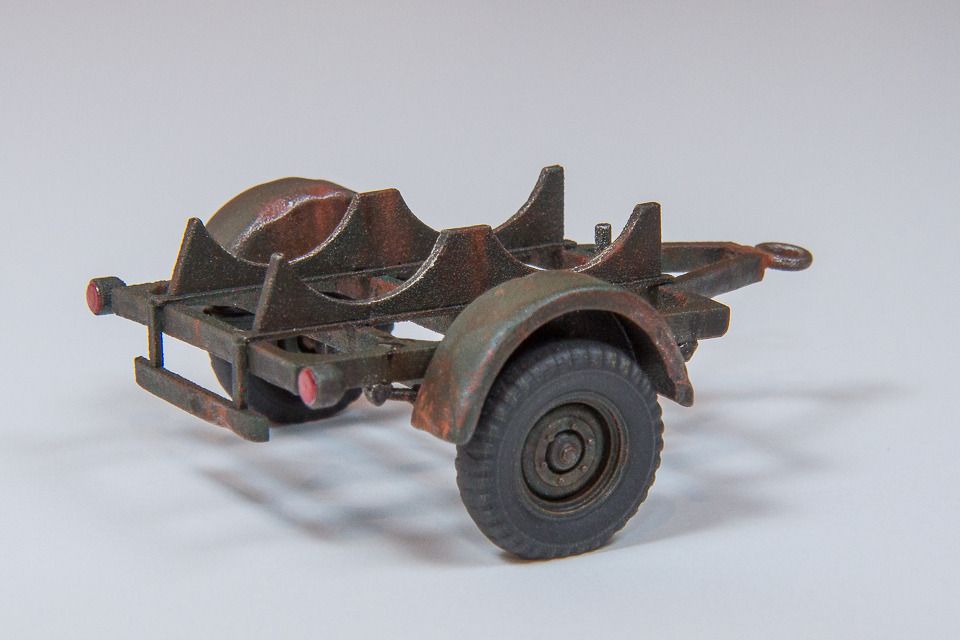
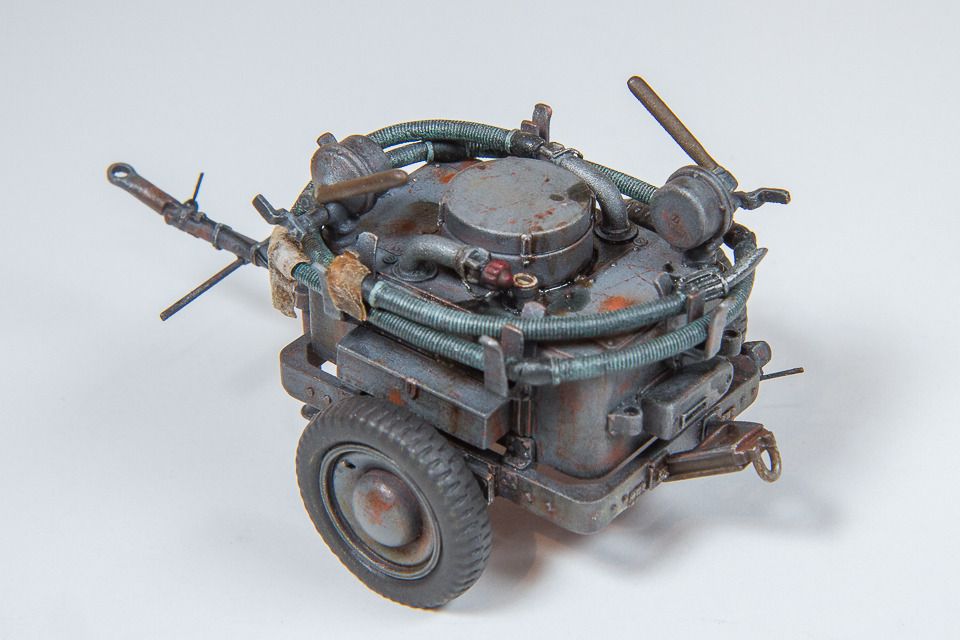
I had recently picked up a set of Mig Rust colored pigments at the APMS National Convention and wanted to give them a try. I tried some different techniques to see which effect would match best for what I was trying to achieve. This included mixing them with thinned rust colored oil using mineral spirits, sprinkling them over a few drops of pigment fixer, and finally adding the pigments first and dropping the pigments fixer on top. For me, I preferred adding the pigment fixer or even the thinned oil paints first and sprinkling on the pigments after. I was happy to see that the fixer (and mineral spirt thinner) does seem to hold pigments in place permanently.
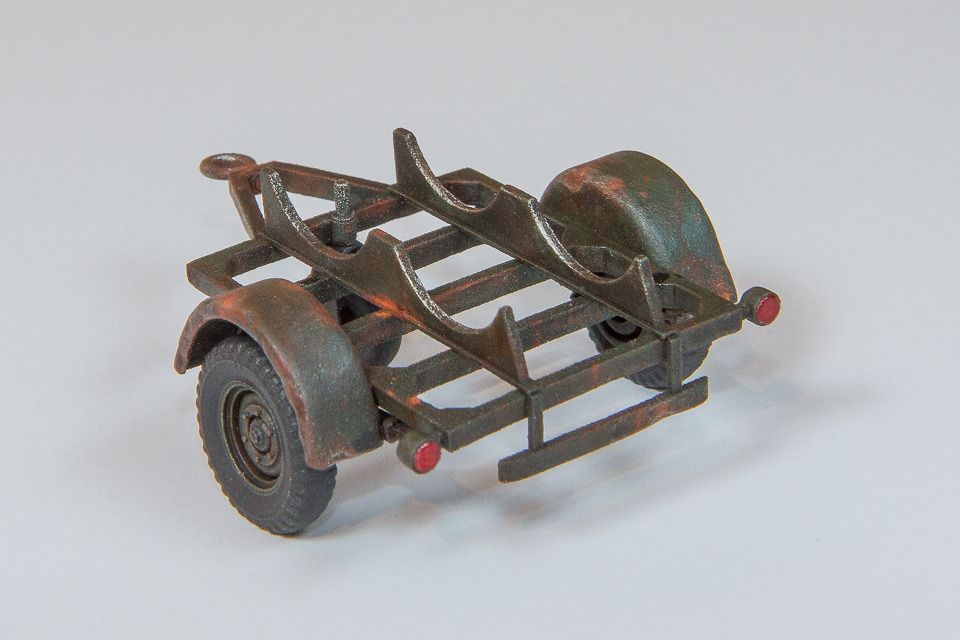
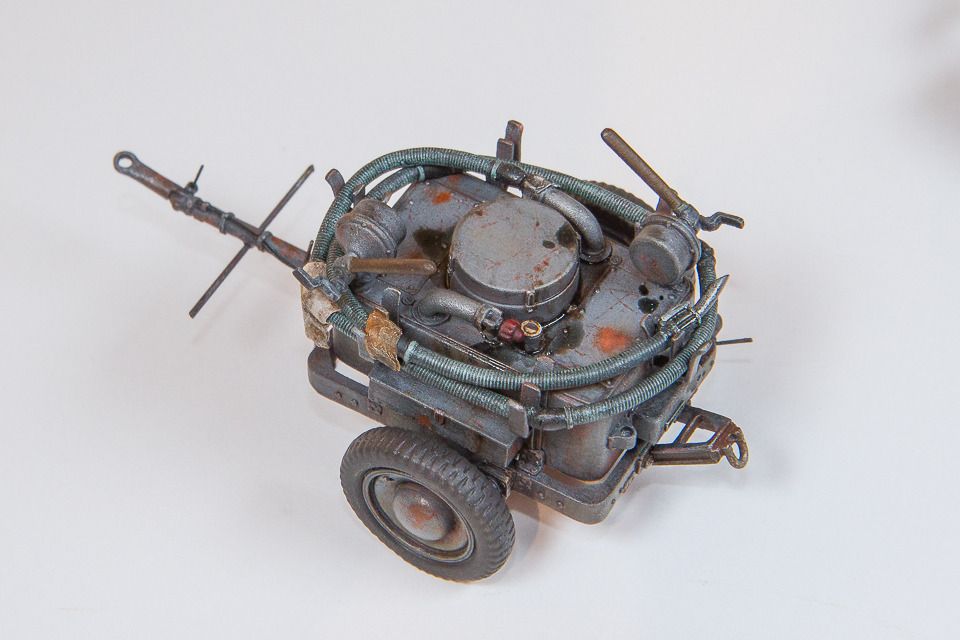
The next big thing I wanted to add to the oil cart were fresh oil stains. By fresh I mean oil that would still be pooled up on the cart that had not dried. I had seen other examples of people using Tamiya Clear Smoke and mixing other colors with it. Thus, I mixed a little Clear Smoke with a few drops of Tamiya Clear Blue (for more of a rainbow sheen) and some Tamiya Brown. On a side note, the last time I had opened my Tamiya Clear Blue was in the mid-1980s…. yes it has happily lasted that long. To be honest, my only paints that truly survived my hiatus from my earlier hobby years were all my Tamiya Clear colors (I wonder what is in them that makes them so special…). I used a small brush and a toothpick to carefully pool this color combo in areas along the top of the oil cart where I thought it would leak from adding oil to the cart and leaking hose connections. I liked this effect so added a couple of drops to the drum cart as well. The Tamiya clear colors really give a nice transparent glossy sheen so they do give the idea of an actual standing liquid vs. just a dried stain on the paint.

I dry brushed the two using AK Interactive True Metal Series - Aluminum Color where I thought bare metal would show from constant wear. This paint is listed as a wax and I really like how it dry brushes and comes to a nice sheen if you add layers to it. I concentrated this on the trailer hitches, latches and the hose nozzle.
Finally, I went and tackled the flexible hose that came with the oil cart. This is not the easiest thing to work with but if you are patient with it I believe it can give a very realistic touch. Although it will flex, the tighter you wrap it the more likely the pins will slip out of the multiple connections and even break the fragile resin. I dry fitted it a couple of times to the oil cart’s hose holders to get it to an overall shape before painting. This included warming it in hot water first. I then removed it from the cart and added putty to areas where the connectors showed gaps. I had to re-glue some of the connections a few times. I sprayed the hose an overall black base coat and then dry brushed it with a mixture of Tamiya blue gray to white colors along the flexible sections. As mentioned above, the hose nozzle at the end was heavily dry brushed with AK Interactive True Metal Wax Aluminum. However, I think I will go back and put a much heavier coat on this since this was likely bare metal to begin with. I also added a couple of “rags” to hang off the hose by folding some tissue paper (2 different sizes) and dipping it in heavily diluted white glue so I could drape them in a realistic position that would stay. I painted them an off-white and brown color using Tamiya paints and added various colored oil stains.

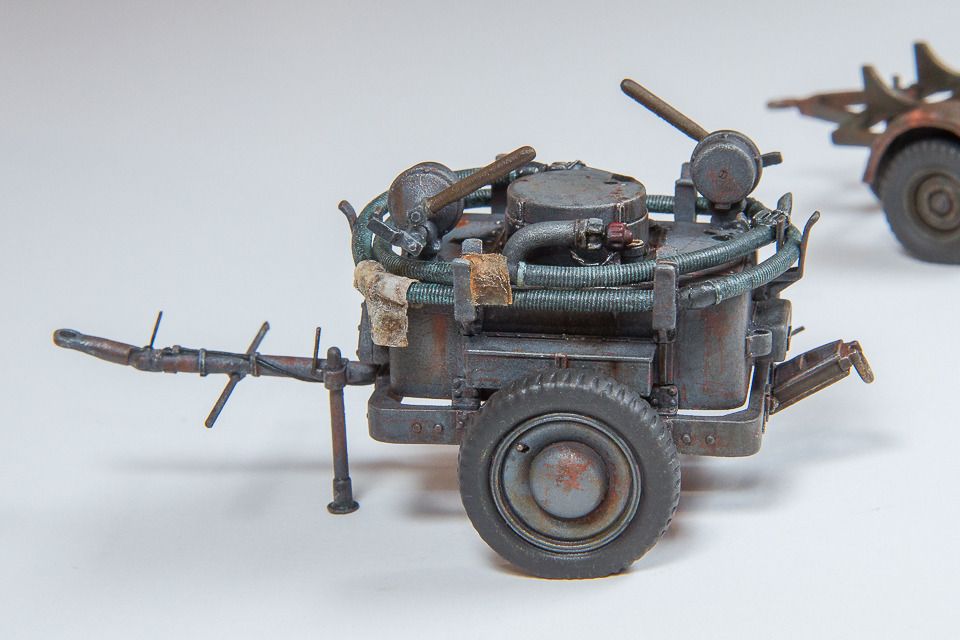
Additional little things I need to go back and do include a little putty work on one of the hose connections and maybe a bit of pastels along the undersides for a more dusty appearance.
This was my first attempt at full resin kits and several weathering techniques. I used these two small vehicles for more of a test bed to see how I would like each. I plan on using these same methods again on some upcoming armor builds. Feel free to leave your thoughts and comments!